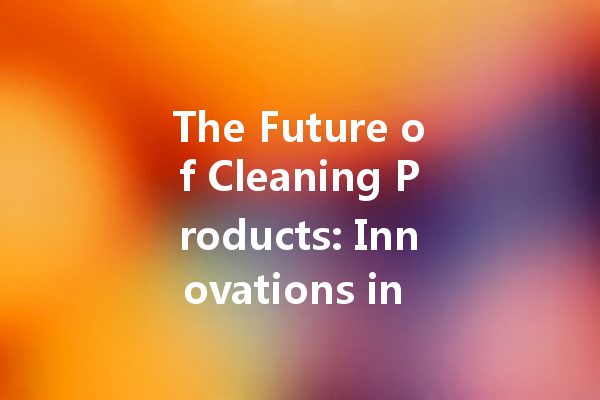In recent years, the cleaning industry has undergone a transformation driven by consumer demand for more sustainable and environmentally friendly products. As awareness of the impact of conventional cleaning agents grows, manufacturers are responding with innovative solutions that prioritize safety, efficacy, and eco-consciousness. This article explores the trends and advances in eco-friendly cleaning agent manufacturing that are shaping the future of the industry.
The Growing Demand for Eco-Friendly Products
Increasingly, consumers are looking for cleaning products that not only work effectively but also align with their values. Concerns over health risks associated with traditional cleaning agents, which often contain harsh chemicals, have prompted consumers to seek out alternatives that are safer for their families and the environment. This shift in consumer behavior has paved the way for eco-friendly cleaning agents, leading manufacturers to reassess their formulations and production processes.
Innovations in Chemical Formulations
One significant area of innovation in cleaning products is the development of new chemical formulations that utilize naturally derived ingredients. Manufacturers are leveraging plant-based surfactants, biodegradable agents, and natural enzymes to enhance the cleaning power of their products without compromising safety. These innovations allow cleaning agents to effectively target and eliminate dirt, grime, and bacteria while being gentle on surfaces and safe for humans and pets.
Embracing Green Chemistry
Green chemistry principles play a crucial role in the innovation of eco-friendly cleaning products. By focusing on reducing waste, minimizing energy consumption, and utilizing renewable resources, manufacturers can create cleaning agents that are not only effective but also sustainable. These practices help to lessen the environmental impact while maintaining high cleaning standards.
The Role of Technology in Manufacturing
Technological advancements have also made a substantial impact on how eco-friendly cleaning products are manufactured. Automated processes and sophisticated production methods allow for greater precision in formulation, ensuring consistency in quality and efficacy. Additionally, technology aids in reducing the overall ecological footprint of production through improved resource management and waste reduction techniques.
Innovations in Packaging Solutions
Beyond formulation, manufacturers are also rethinking their packaging strategies to support their sustainability goals. Biodegradable packaging, refillable containers, and reduced plastic usage are becoming common practices within the industry. Innovative packaging design not only enhances the brand’s eco-friendly image but also appeals to consumers looking to minimize their environmental impact.

Regulatory Compliance and Certifications
As the demand for eco-friendly cleaning agents grows, so do the guidelines and regulations governing their manufacture. Compliance with environmental standards and certifications from reputable organizations not only ensures product safety but also builds consumer trust. Manufacturers are increasingly seeking certifications for their products, such as “Green Seal” or “USDA Certified Biobased Product,” to communicate their commitment to sustainability and safety.
The Importance of Transparency
Modern consumers expect transparency from brands regarding the ingredients and manufacturing practices behind their products. As a result, many manufacturers have begun to provide detailed information about their formulations, sourcing practices, and environmental impact. This trend towards transparency fosters greater trust and loyalty among consumers.
Challenges Facing Eco-Friendly Cleaning Agents
While the shift towards eco-friendly cleaning products presents numerous opportunities, it also brings challenges. One of the primary hurdles is the perception that natural or eco-friendly products are less effective than their conventional counterparts. Manufacturers must continuously invest in research and development to demonstrate that eco-friendly solutions can match or exceed the performance of traditional cleaning agents.
Balancing Cost and Sustainability
Producing eco-friendly cleaning agents can be more expensive than conventional manufacturing processes. As a result, manufacturers face the challenge of balancing cost and sustainability. Educating consumers about the value of investing in eco-friendly products—such as their safety, environmental benefits, and long-term cost savings—can help mitigate this challenge.
Conclusion: A Cleaner Future Awaits
The future of cleaning products is bright, with innovations in eco-friendly agent manufacturing paving the way for a safer, cleaner, and more sustainable world. As consumers increasingly favor eco-conscious options, manufacturers are rising to the challenge by reformulating products and implementing sustainable practices. Through technology, transparency, and a commitment to green chemistry, the industry is positioning itself for continued success in shaping a healthier environment for generations to come. The ongoing evolution of cleaning agents signifies a promising shift towards sustainability that aligns with both consumer needs and ecological responsibility.
